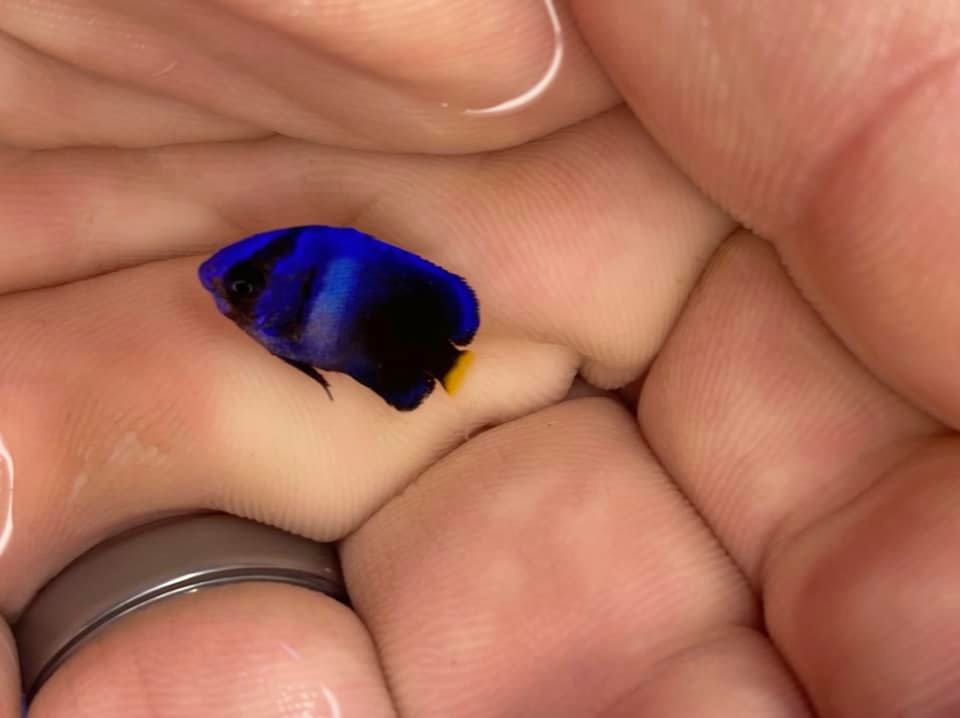
The Florida-based marine angelfish breeding powerhouse, Dr. Matthew L. Wittenrich’s Poma Labs, is back grabbing headlines again with a bold new entry into the captive-bred marine fish marketplace. The world’s first captive-bred African Angelfish, Holacanthus africanus, were revealed by the company at the tail end of October, 2021.
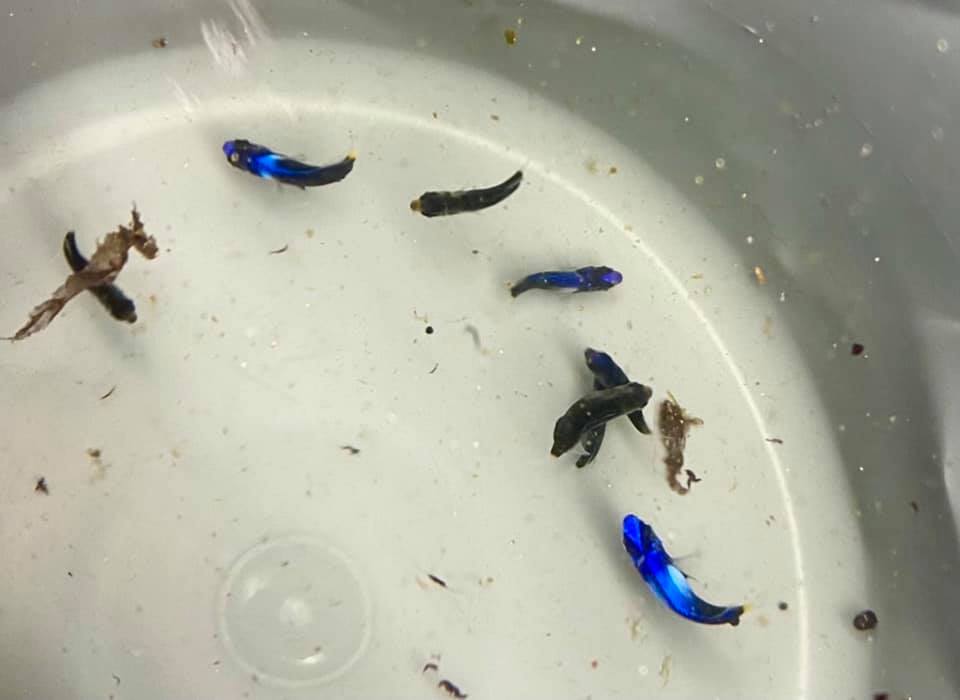
These scorchingly gorgeous fishes represent a first foray into a new genus of angelfish for Poma Labs, and tackle bringing another high-ticket member of the genus Holacanthus into the realm of captive-bred options for discerning marine aquarists. One of the obvious benefits to having these fish available as captive-bred offerings means being able to purchase them at smaller juvenile sizes and enjoying their brilliant juvenile coloration longer. Plus, being captive-bred in the U.S. means there are fewer transportation risks for these tiny angels due to shorter transit times.
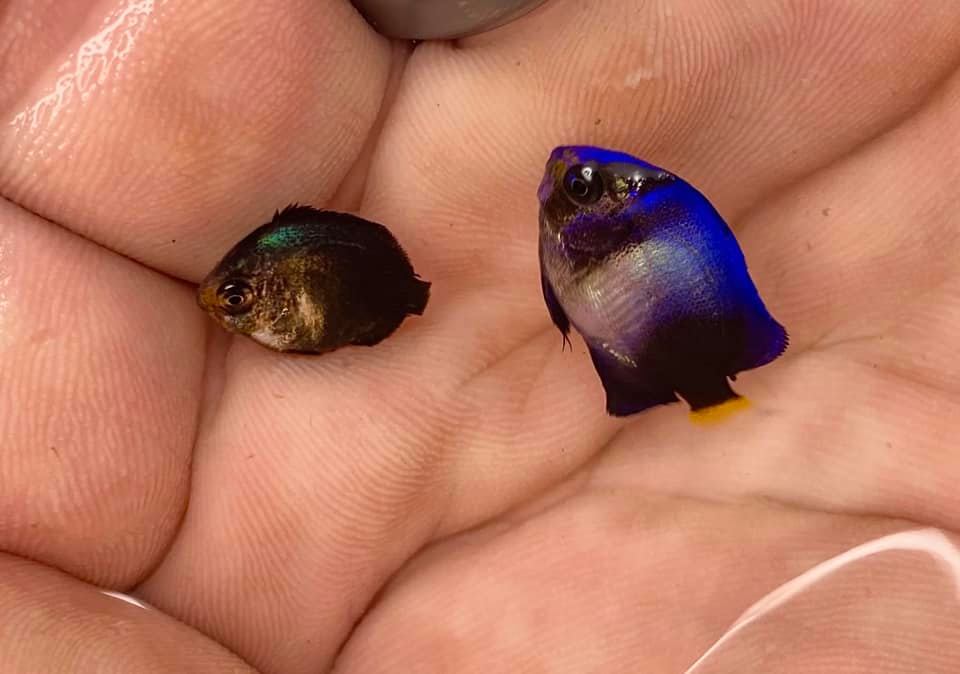
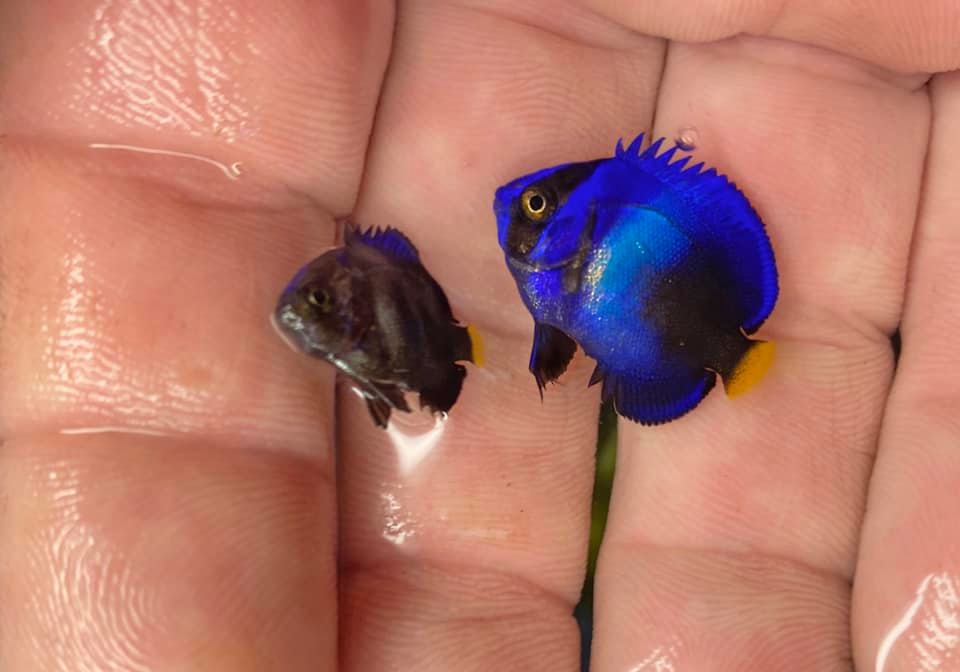
Poma Labs anticipates the first juvenile captive-bred African Angelfish will be available for purchase as early as December 2021.
Watch The World’s First Captive-Bred Holacanthus africanus swimming in the rearing tanks at Poma Labs!
About the African Angelfish
Holcanthus africanus is known as the African or Guinean Angelfish. It is found in the eastern Atlantic Ocean along the tropical west coast of the African continent. There are also reports of it starting to appear in the Mediterranean. Ornamental marine fish exports from Africa are relatively uncommon, but particularly rare from the western coast, meaning that the fishes found there are generally rare in the aquarium trade, and with that comes commensurate higher prices.
Along with the Goldenheart Triggerfish (Balistes punctatus), the African Angelfish is one of the flagship offerings from the region, not because of the adult’s coloration, but rather the outstanding juvenile coloration composed of brilliant blue hues with vivid orange highlights. The fish matures into a relatively somber colored adult displaying fine pattering in late autumn earth tones, the best specimens retaining pleasing highlights of yellow in their fins. While growing to a potentially large adult size (45 cm / 18 inches) and lacking the spectacular coloration of its relatives, it does retain a pleasing body form with extensions on the dorsal and anal fins, much like its more familiar western Atlantic relatives, the Blue and Queen Angelfishes (H. burmudensis and H. ciliaris).
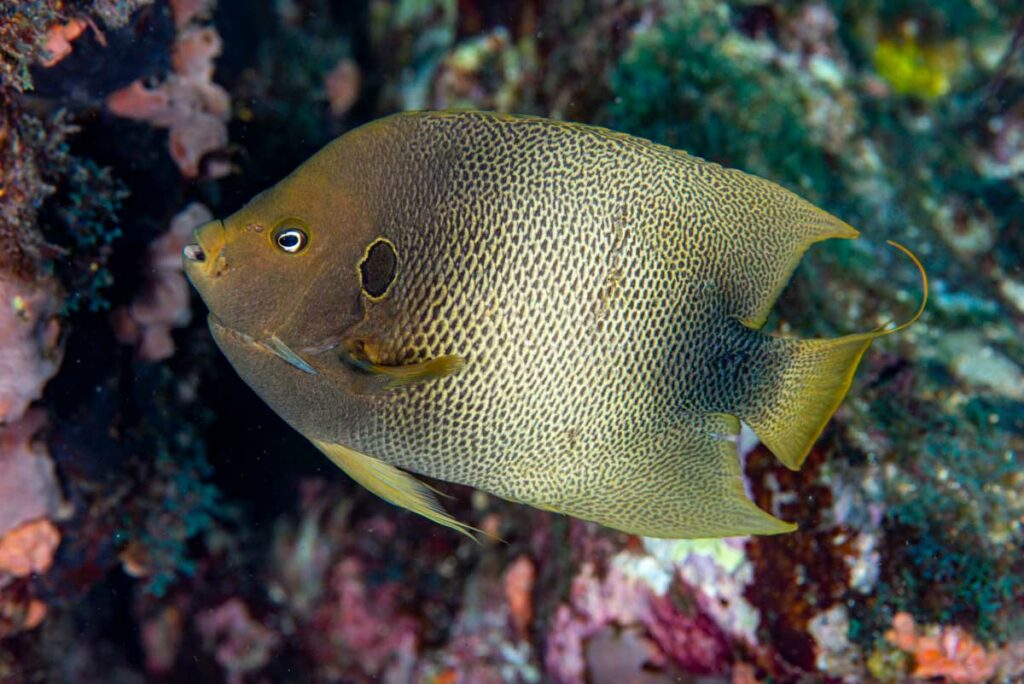
Based on my own experiences with other Holacanthus angelfishes, it will probably take at least a couple of years for the youngest African Angelfish to transition into adult coloration, and during this time period, the fish will undergo a beautiful transformation. As an adult, it’s likely that you’ll enjoy a bold, personable angelfish that may well be considered more of a “pet” than the average marine fish and has the potential to live for many years.





I love the babies, they are the perfect color. Not quite sure I would know what to do with an 18″ fish later though…. 😉
what is the price of African angelfish?